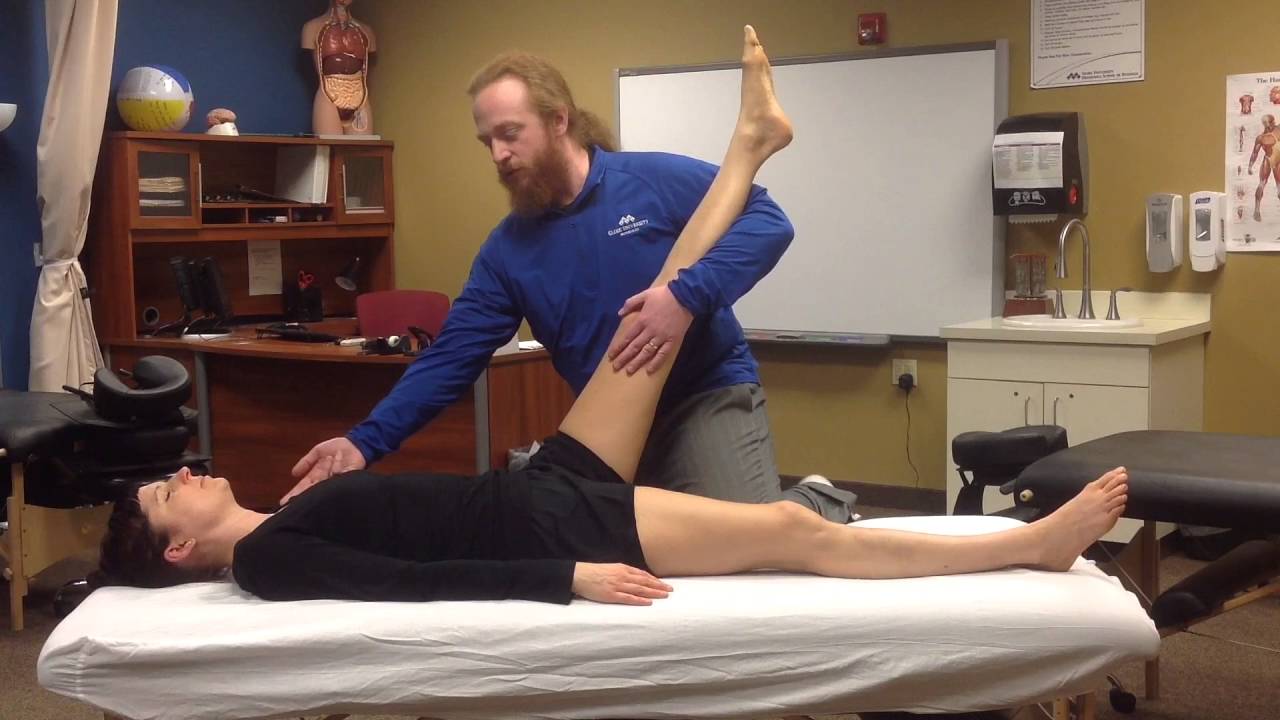Contents
Introduction
Regarding the musculoskeletal system, the various muscles, tissues, and ligaments help protect the spine and vital organs that make the body functional. These muscles are sectioned into different groups that help provide movement and motion to the host without feeling pain. However, when normal factors or traumatic forces begin to affect the musculoskeletal system, it can cause unnecessary stress on the muscle fibers. These environmental factors can lead to muscle pain and correlating symptoms affecting the upper and lower body portions. When muscle pain affects the body, it can mask other pre-existing conditions that can make the individual feel miserable. Fortunately, many individuals will go to therapy treatment to reduce the effects of muscle pain and have a personalized plan that they can follow to prevent muscle pain from returning in the future. Today’s article focuses on one of the non-surgical treatments known as MET (muscle energy technique) therapy that can help reduce the effects of muscle pain and what is the protocol treatment plan to relieve muscle pain in the body. We work with certified medical providers who use our patients’ valuable information to treat individuals suffering from muscle pain while informing them about non-surgical treatments like MET therapy that can help reduce the effects of musculoskeletal pain. We encourage patients to ask essential questions and seek education from our associated medical providers about their condition. Dr. Jimenez, D.C., provides this information as an educational service. Disclaimer
How Does Muscle Pain Affect The Body?
Do you experience muscle aches, stiffness, or pain in one or more parts of your body? These pain-like symptoms are often caused by muscle pain. Research studies revealed that free nerve endings in muscle fibers can send pain signals to the brain, leading to decreased productivity and economic burden. Overstretching muscles during daily routines can cause trigger points, small nodules in muscle fibers that cause stiffness and contraction. This can lead to misalignment and additional problems over time.
Muscle pain can be a symptom of different conditions, with severity ranging from acute to chronic. Research studies stated that when musculoskeletal pain affects more than 30% of the world, it can significantly impact an individual’s life. This type of pain can be related to sensory innervation of the bones, joints, and muscles and can negatively affect a person’s daily routine. However, there are various ways to reduce muscle pain, which individuals can incorporate to relieve muscle pain and reduce its chances of returning.
Movement As Medicine- Video
When it comes to musculoskeletal pain, it can have a significant impact on a person’s body. It can affect their daily routine, causing them to have limited mobility and feel miserable. Musculoskeletal pain causes the involved muscle fibers to stiffen up and contract. This causes the surrounding muscles to compensate for the pain the affected muscle feels and causes body misalignment. However, all is not lost, as available treatments can help reduce the effects of muscle pain and can bring back a person’s mobility. One of these treatments is MET (muscle energy technique) therapy. Research studies reveal that MET is an osteopathic technique that many pain specialists like chiropractors and massage therapists use to improve musculoskeletal function by mobilizing joints, stretching tight muscles and facia to reduce pain, and improving circulation and lymphatic flow. Since many individuals don’t stretch their bodies as often as needed, their muscles can become tight and stiff, which causes the development of muscle pain. So by utilizing MET therapy, a person dealing with muscle pain can regain mobility. MET therapy can also be combined with other treatments like chiropractic care to help realign the body out of subluxation and strengthen/lengthen tight muscles. The video above explains how movement is used as medicine to reduce the effects of muscle pain.
MET Treatment Protocol
According to “Clinical Application of Neuromuscular Techniques,” written by Leon Chaitow, N.D., D.O., and Judith Walker DeLany, L.M.T., when the body is experiencing restricted joints, incorporating MET therapy can indicate where the problem is located in the soft musculoskeletal tissues. When it comes to many individuals going to MET therapy for muscle pain, many doctors have their protocol approach when assessing patients for muscle pain treatment.
Looking At Body Language
When assessing patients with muscle pain, looking at their body language and how they carry themselves is important. Many doctors and pain specialists should note how the individual is breathing, their posture, and if there is any perspiration on the skin. By taking note of how the individual looks physically, many doctors will begin to formulate a treatment plan while communicating with the patient to gather more information and create a trusting relationship. Afterward, the doctor can start the physical examination to locate where the pain is in the body.
Physical Examination
The MET treatment protocol’s physical examination portion allows the doctor to go through a sequential assessment involving observation, joint and muscle testing, palpations, evaluation of accessory movement, etc., to create a basic formula to create a personalized treatment plan. The physical examination of MET allows the muscles to influence muscle contractions on the surrounding fascia and alter the muscle’s physiology by reflex mechanisms. These stretches help the restricted joints be re-mobilized, and help stretch the tightened muscles to feel relief from metabolic waste.
Therapeutic Plan
The therapeutic plan for MET treatment is personalized and customizable for the individual to follow through to reduce muscle pain from re-occurring in the body. Many doctors specializing in MET therapy work with other associated medical providers to ensure that the person in pain has the help they need. Physical therapy, dietary nutrition, non-surgical treatments, and health coaches all work together to create a personalized health and wellness plan to make sure that muscle pain and its associated factors are being treated. This allows individuals to be more mindful of their bodies and regain their health and wellness.
Conclusion
Muscle pain can affect a person’s ability to move around and can affect multiple areas in the upper and lower body portions. Muscle pain correlates to tight muscle fibers that become stiff and can develop trigger points in the fascia and cause restricted movement. When this happens, it can cause the individual to miss out on daily activities and prevent them from working. Luckily available treatments can help reduce muscle pain by re-mobilizing the joints and stretching out the tight muscle. MET, or muscle energy technique therapy, helps stretch muscle fascia and mobilize joints to regain the body’s range of motion and help reduce muscle pain. Many people who incorporate MET into their daily routine can restore mobility and continue their health and wellness journey.
References
Chaitow, L., & Delany, J. (2002). Clinical application of neuromuscular techniques. Vol. 2, The lower body. Churchill Livingstone.
Disclaimer
Professional Scope of Practice *
The information on "MET Therapy Protocol For Muscle Pain" is not intended to replace a one-on-one relationship with a qualified health care professional or licensed physician and is not medical advice. We encourage you to make healthcare decisions based on your research and partnership with a qualified healthcare professional.
Blog Information & Scope Discussions
Welcome to the wellness blog of El Paso Back Clinic, where Dr. Alex Jimenez, DC, FNP-C, a board-certified Family Practice Nurse Practitioner (FNP-C) and Chiropractor (DC), presents insights on how our team is dedicated to holistic healing and personalized care. Our practice aligns with evidence-based treatment protocols inspired by integrative medicine principles, similar to those found on dralexjimenez.com, focusing on restoring health naturally for patients of all ages.
Our areas of chiropractic practice include Wellness & Nutrition, Chronic Pain, Personal Injury, Auto Accident Care, Work Injuries, Back Injury, Low Back Pain, Neck Pain, Migraine Headaches, Sports Injuries, Severe Sciatica, Scoliosis, Complex Herniated Discs, Fibromyalgia, Chronic Pain, Complex Injuries, Stress Management, Functional Medicine Treatments, and in-scope care protocols.
Our information scope is limited to chiropractic, musculoskeletal, physical medicine, wellness, contributing etiological viscerosomatic disturbances within clinical presentations, associated somato-visceral reflex clinical dynamics, subluxation complexes, sensitive health issues, and functional medicine articles, topics, and discussions.
We provide and present clinical collaboration with specialists from various disciplines. Each specialist is governed by their professional scope of practice and their jurisdiction of licensure. We use functional health & wellness protocols to treat and support care for the injuries or disorders of the musculoskeletal system.
Our videos, posts, topics, subjects, and insights cover clinical matters, issues, and topics that relate to and directly or indirectly support our clinical scope of practice.*
Our office has reasonably attempted to provide supportive citations and has identified the relevant research studies or studies supporting our posts. We provide copies of supporting research studies available to regulatory boards and the public upon request.
We understand that we cover matters that require an additional explanation of how they may assist in a particular care plan or treatment protocol; therefore, to discuss the subject matter above further, please feel free to ask Dr. Alex Jimenez, DC, APRN, FNP-BC, or contact us at 915-850-0900.
We are here to help you and your family.
Blessings
Dr. Alex Jimenez, DC, MSACP, APRN, FNP-BC*, CCST, IFMCP, CFMP, ATN
email: coach@elpasofunctionalmedicine.com
Licensed as a Doctor of Chiropractic (DC) in Texas & New Mexico*
Texas DC License # TX5807
New Mexico DC License # NM-DC2182
Licensed as a Registered Nurse (RN*) in Texas & Multistate
Texas RN License # 1191402
ANCC FNP-BC: Board Certified Nurse Practitioner*
Compact Status: Multi-State License: Authorized to Practice in 40 States*
Graduate with Honors: ICHS: MSN-FNP (Family Nurse Practitioner Program)
Degree Granted. Master's in Family Practice MSN Diploma (Cum Laude)
Dr. Alex Jimenez, DC, APRN, FNP-BC*, CFMP, IFMCP, ATN, CCST
My Digital Business Card










